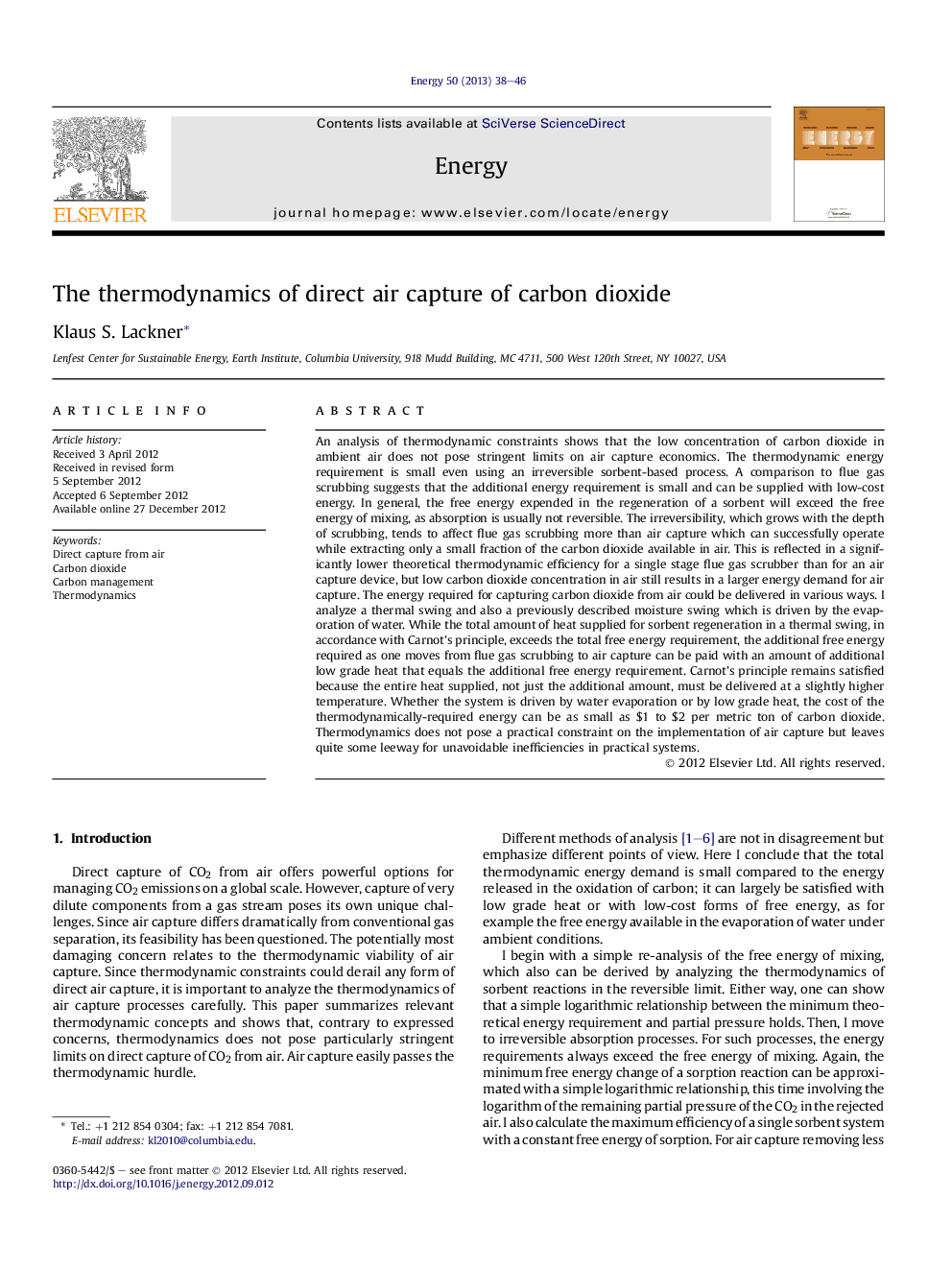| کد مقاله | کد نشریه | سال انتشار | مقاله انگلیسی | نسخه تمام متن |
|---|---|---|---|---|
| 1733214 | 1521496 | 2013 | 9 صفحه PDF | دانلود رایگان |

An analysis of thermodynamic constraints shows that the low concentration of carbon dioxide in ambient air does not pose stringent limits on air capture economics. The thermodynamic energy requirement is small even using an irreversible sorbent-based process. A comparison to flue gas scrubbing suggests that the additional energy requirement is small and can be supplied with low-cost energy. In general, the free energy expended in the regeneration of a sorbent will exceed the free energy of mixing, as absorption is usually not reversible. The irreversibility, which grows with the depth of scrubbing, tends to affect flue gas scrubbing more than air capture which can successfully operate while extracting only a small fraction of the carbon dioxide available in air. This is reflected in a significantly lower theoretical thermodynamic efficiency for a single stage flue gas scrubber than for an air capture device, but low carbon dioxide concentration in air still results in a larger energy demand for air capture. The energy required for capturing carbon dioxide from air could be delivered in various ways. I analyze a thermal swing and also a previously described moisture swing which is driven by the evaporation of water. While the total amount of heat supplied for sorbent regeneration in a thermal swing, in accordance with Carnot's principle, exceeds the total free energy requirement, the additional free energy required as one moves from flue gas scrubbing to air capture can be paid with an amount of additional low grade heat that equals the additional free energy requirement. Carnot's principle remains satisfied because the entire heat supplied, not just the additional amount, must be delivered at a slightly higher temperature. Whether the system is driven by water evaporation or by low grade heat, the cost of the thermodynamically-required energy can be as small as $1 to $2 per metric ton of carbon dioxide. Thermodynamics does not pose a practical constraint on the implementation of air capture but leaves quite some leeway for unavoidable inefficiencies in practical systems.
► The thermodynamics of capturing carbon dioxide from ambient air is analyzed.
► The free energy of mixing is analyzed for reversible and irreversible absorption processes.
► Thermal and moisture swing methods of capturing carbon dioxide are analyzed.
► Efficiencies of a single sorbent system and an attainable efficiency for air capture are identified.
► Thermodynamics are shown to not pose stringent constraints on direct air capture.
Journal: Energy - Volume 50, 1 February 2013, Pages 38–46